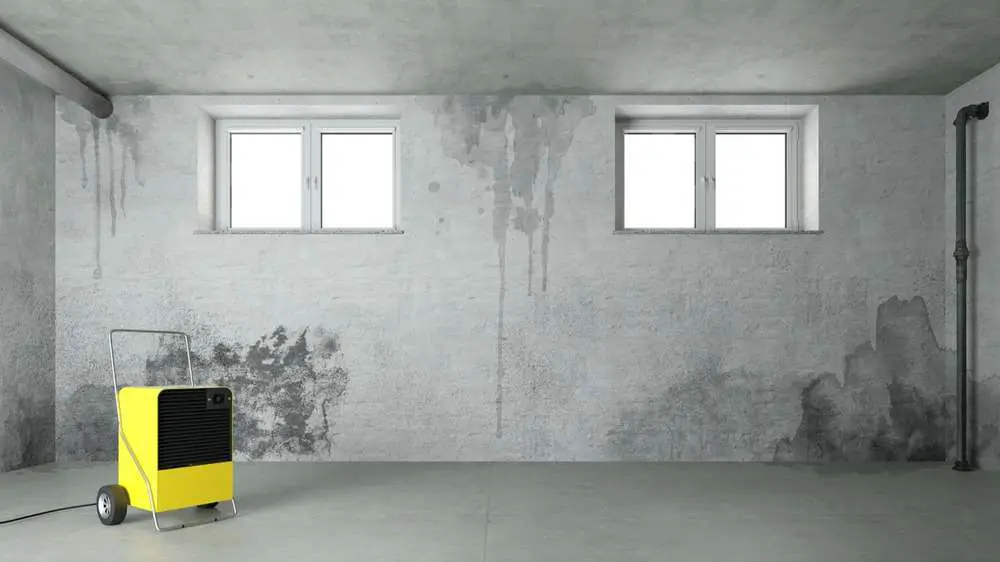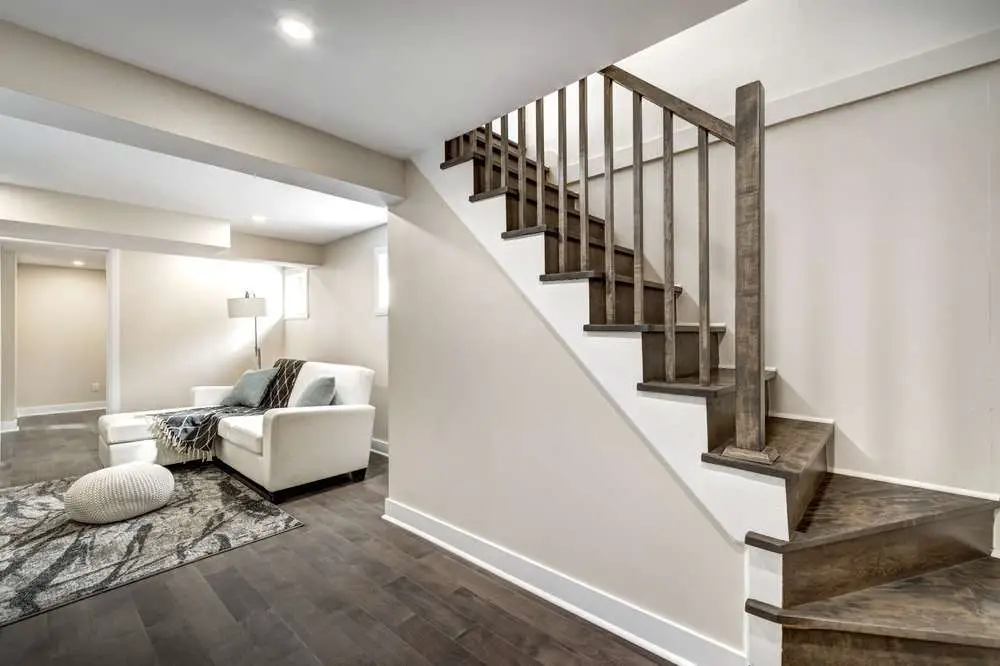The 3 Best Dehumidifier for Basement With Drain Hose Choices

The basement tends to be one of the most neglected spaces in a home. It is also one of the most moisture-prone areas in your home since it is closed and poorly ventilated. The extra moisture in the air promotes black mold and bacteria growth, which is a safety hazard. So, how can homeowners regulate moisture in their basement? With the best dehumidifier with drain hose for the basement choices of course.
The best dehumidifier for the basement with a drain hose choices are:
- Honeywell 70-Pint Dehumidifier with Pump
- Tosot 50-Pint Dehumidifier
- Midea Cube 20-Pint Dehumidifier up to 1,500 Sq. Ft.
We review these and tell you exactly why they are the best in their class.
Table of contents
Why do you need a dehumidifier in the basement?

Excess moisture is a common problem in basements. The space is typically closed and poorly ventilated. There is also the chance of additional moisture seeping through the foundation or water leaks.
Too much moisture in the atmosphere is damaging to your home. Moreover, the moisture promotes bacteria, mildew, and mold growth. According to the Basement Health Association, you need to keep the moisture level below 50% to prevent mold.
Once mold starts to grow, it will spread rapidly. It eventually reaches the home’s foundation, eating away at it. Thus, putting the structure at risk of collapsing. Not to mention potential health issues too.
A dehumidifier lets you control the moisture levels in your basement. Specifically, it filters out moisture from the air and ensures the level stays under 50%. So, buying the device is an investment. It makes sure the structure of your home remains intact.
Why is a drain hose important for a dehumidifier in the basement?
Many dehumidifier users complain about having to empty the water tank daily. The moisture that the device filters out collects in its water tank. Most units stop functioning once the tank is full. So, users need to empty the tank every time it gets full.
A drain hose allows the water collected in the tank to drain through. Most people usually connect the hose to a drain in the basement so the water doesn’t collect on the floor. The hose makes using the device a lot easier, eliminating the constant need for you to empty the tank.
Our pick for the best dehumidifier for your basement with a drain hose
After carefully researching the market, we picked the top three for a home’s basement with a drain hose attachment. The best part about them is that the manufacturer provides the drain hose in the box. So, let’s look at our top three.
1. Honeywell 70-Pint Dehumidifier with Pump
No products found.
Pros
- Bulky, sturdy design that is good for the basement
- Comes with a 15-foot drain hose
- A big device that can control the moisture level in basements up to 4,000 square feet (372 square meters)
Cons
- Some users have complained that the device’s auto-shut-off functionality doesn’t work.
The Honeywell 70-Pint Dehumidifier is a massive device, perfect for basements up to 4,000 square feet (372 square meters). It can remove up to 70 pints of water (10.5 U.S. gallons) from the air per day. For those that want a smaller device, you have the option of the Honeywell 50-Pint model, which is just as effective in smaller basements.
The pump model makes the life of homeowners a lot easier. Once the device’s 14-pint water tank (2.1 U.S. gallons) is full, the pump kicks in and starts to drain the water out through the drain hose. Honeywell provides a 15-foot (4.57 meters) hose, which is pretty big.
As far as moisture control goes, you get to set the moisture level you want. The device will drop moisture down to your level in two to three hours. Keep in mind that bigger basements may take longer.
Overall, the Honeywell 70-pint Dehumidifier is easy to use with a digital humidistat and comes with a five-year warranty.
2. Tosot 50-Pint Dehumidifier
- 4,500 SQ FT: Our dehumidifier can remove up to 50 pints of water every 24 hours (same as 70 Pint units under 2012 DOE standard.) A lower humidity level allows your AC system to work more efficiently because it’s easier to change the temperature of dry air compared to moist, super-humid air.
- INTERNAL PUMP: The internal pump automatically removes collected water from the dehumidifier so you never experience downtime due to a full water bucket. Water can be pumped sideways or vertically up to 16 feet away. Water will collect in the bucket until it’s almost full, then the internal pump will automatically start up to remove the collected water.
Pros
- Well-designed and looks like a dehumidifier from the future
- Quiet operation
- Comes with a 12-foot drain hose
Cons
- While the device is easy to operate, it doesn’t have a digital interface
The Tosot 50-Pint Dehumidifier is one of the best in the medium-sized range of dehumidifiers. It works around the clock and features a compressor that filters out 50 pints (7.5 U.S. gallons) of water per day. It features an 8-pint bucket (1.2 U.S. gallons) but the 12-foot (3.66 meters) drain hose attachment lets the device function throughout the day.
The best part about the device is how silent it is. It operates between 51 and 55 decibels, which is equivalent to a quiet conversation. So, if you need to use it in any other part of your home, you can. The design of the device is also appealing, and it stands out compared to other devices in its class.
Using the dehumidifier is easy. You set your desired moisture level through a dial, and the device works to bring the humidity down accordingly. The device is elegant yet simple to use.
3. Midea Cube 20-Pint Dehumidifier up to 1,500 Sq. Ft.
- 1,500 Sq.Ft. OF COVERAGE – Midea dehumidifier with drain hose is able to collect 20 pint (Similar to 30 PT-2012 DOE) of water a day and adjust humidity from 35% to 85%, perfect for use for basement, bathroom, bedroom, or crawlspace.
- SMALLER FORM, LARGER CAPACITY – Up to 3X larger water tank allows the Midea Cube dehumidifier to operate up to 3X longer than a conventional dehumidifier. You can enjoy more time without the hassle of emptying the water tank. Removable Bucket with 3.2 Gallons/12L bucket size.
Pros
- Compact design
- Has WiFi, Alexa, and Google Assistant enabled
- Works well at removing moisture from the air even with a compact size
Cons
- Loud
The Midea Cube 20-Pint Dehumidifier is perfect for smaller basements. The device is the most compact out of the three on our list but features a decent-sized water tank. It collects up to 20 pints (3 U.S. gallons) of water a day. The drain hose continuously drains water out from the tank too.
Most tech-savvy homeowners will enjoy the extra features on the Midea. You can connect it to your WiFi and control it through your smartphone. It also has Alexa and Google Assistant enabled, so voice control is an option.
The compact design lets you store the device almost anywhere you want when it is not in use. The only shortcoming of the device is that it is pretty loud, but that shouldn’t matter when it operates in the basement.
Final thoughts: Best dehumidifier for basement with drain hose
Buying a dehumidifier for your basement is an investment in your home’s safety. A closed, damp basement is a haven for mildew and mold. Moreover, if you don’t control the moisture level, the fungus will spread and wreak havoc on your home. Any of the three dehumidifiers we listed above can help prevent that.
What are your thoughts on these best dehumidifiers for the basement with drain hose choices though? Which one are you looking at getting? Let us know your choice and why in the comments below!
About the Author Belal
Belal Rizvi enjoys writing about home improvement and do-it-yourself projects. He is an avid learner of the mold removal and dehumidifiers industry and provides insightful information about it to the readers.


